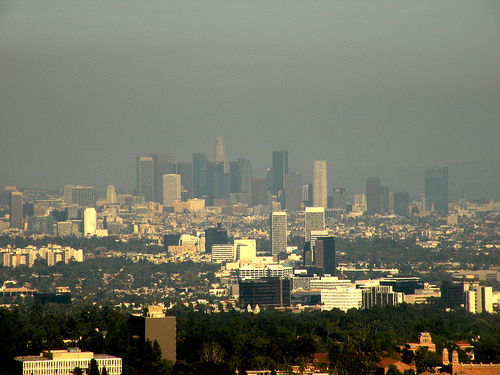Air Quality
We take a breath over 20,000 times a day. Good air quality is important to your health and to the environment.
Air pollution comes from many different sources: industrial sources such as factories and power plants and smaller sources such as asphalt plants, dry cleaners and degreasing operations; the transportation sector such as cars, buses, planes, trucks, and trains; and naturally occurring sources such as windblown dust and volcanic eruptions. Air quality can be affected in many ways by the pollution emitted from these sources and air pollutants can have different health effects on the human body.
The NHDES Environmental Health Program assesses the health impacts of pollutants in the environment. At the request of NHDES programs and other New Hampshire state agencies, staff prepare technical assessments to evaluate the public health risk associated with exposure to these pollutants. The department is often asked to evaluate health impacts from exposure to environmental odors as well.
Did you know?
Did you know?
New Hampshire’s air meets all current federal standards. There are typically several days each year when the air is unhealthy to breathe for sensitive groups, when NHDES issues Air Quality Action Days. NHDES provides current air quality information and forecasts daily. See the 2020 annual report for a summary of New Hampshire's air quality.
Real-Time Data
Related Content
Burning Wood
While regulations have primarily targeted industrial sources and transportation for reducing air pollution, we as individuals make choices every day that also affect air quality. Whether it is burning materials in our backyard or using wood to heat our homes, there are things you can do to reduce your impact on air pollution.
Air Pollutants
Air pollution sources can also emit a wide variety of pollutants. Air pollutants are typically measured by special equipment that is capable of sensing very low levels of ambient concentrations. Because air pollution causes health impacts at such low concentrations, special equipment is needed in order to measure them. NHDES operates a monitoring network with stations located throughout the state to track the ambient concentrations of primary air pollutants of concern in New Hampshire. Air pollutants are typically broken into three categories: criteria pollutants, toxic air pollutants, and greenhouse gases.

Six pollutants that are very common and are generally the result of the burning of fossil fuels are called criteria pollutants. Each of the criteria pollutants have associated National Ambient Air Quality Standards (NAAQS) developed to protect human health and the environment. Some of the criteria pollutants cause environmental and welfare damage such as regional haze and acid rain. Carbon monoxide and nitrogen dioxide are particularly associated with mobile sources, such as cars and trucks, and sulfur dioxide is commonly associated with the burning of coal. Wood burning can be a source of concern for particulate matter.
Gases that trap heat in the atmosphere are called greenhouse gases. Greenhouse gases consist of carbon dioxide, methane, nitrous oxide and fluorinated gases (hydrofluorocarbons, perfluorocarbons, sulfur hexafluoride, and nitrogen trifluoride), which are synthetic, powerful greenhouse gases that are emitted from a variety of industrial processes. Fluorinated gases are sometimes used as substitutes for stratospheric ozone-depleting substances (e.g., chlorofluorocarbons, hydrochlorofluorocarbons and halons). Human activities are responsible for almost all of the increase in greenhouse gases in the atmosphere over the last 150 years. The largest source of greenhouse gas emissions from human activities in the United States is from burning fossil fuels for electricity, heat and transportation.

While EPA regulates 187 hazardous air pollutants under the CAA Amendments of 1990, NHDES also regulates additional toxic air pollutants under the authority of the Air Toxic Control Act and the related regulation Env-A 1400, Regulated Toxic Air Pollutants. Most air toxics originate from human-made sources, including the transportation sector and industrial sources, as well as indoor sources (e.g., some building materials and cleaning solvents). Some air toxics are also released from natural sources such as volcanic eruptions and forest fires.




